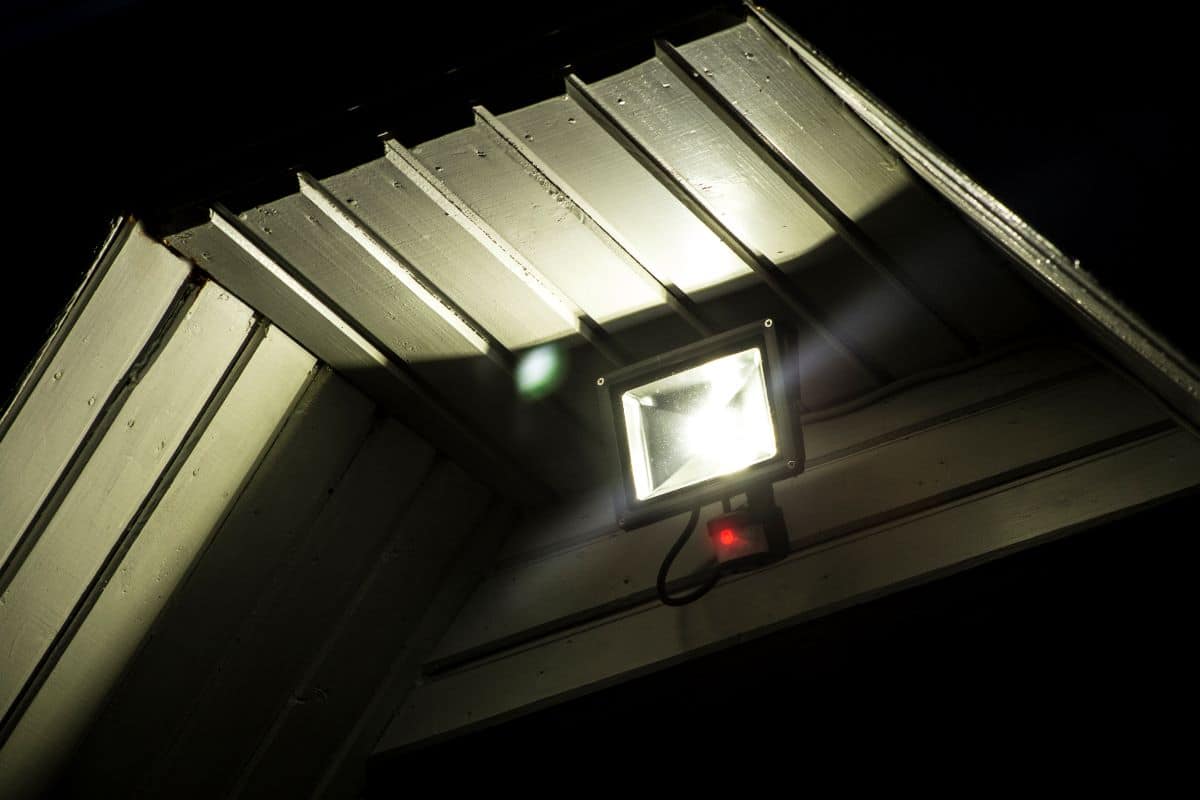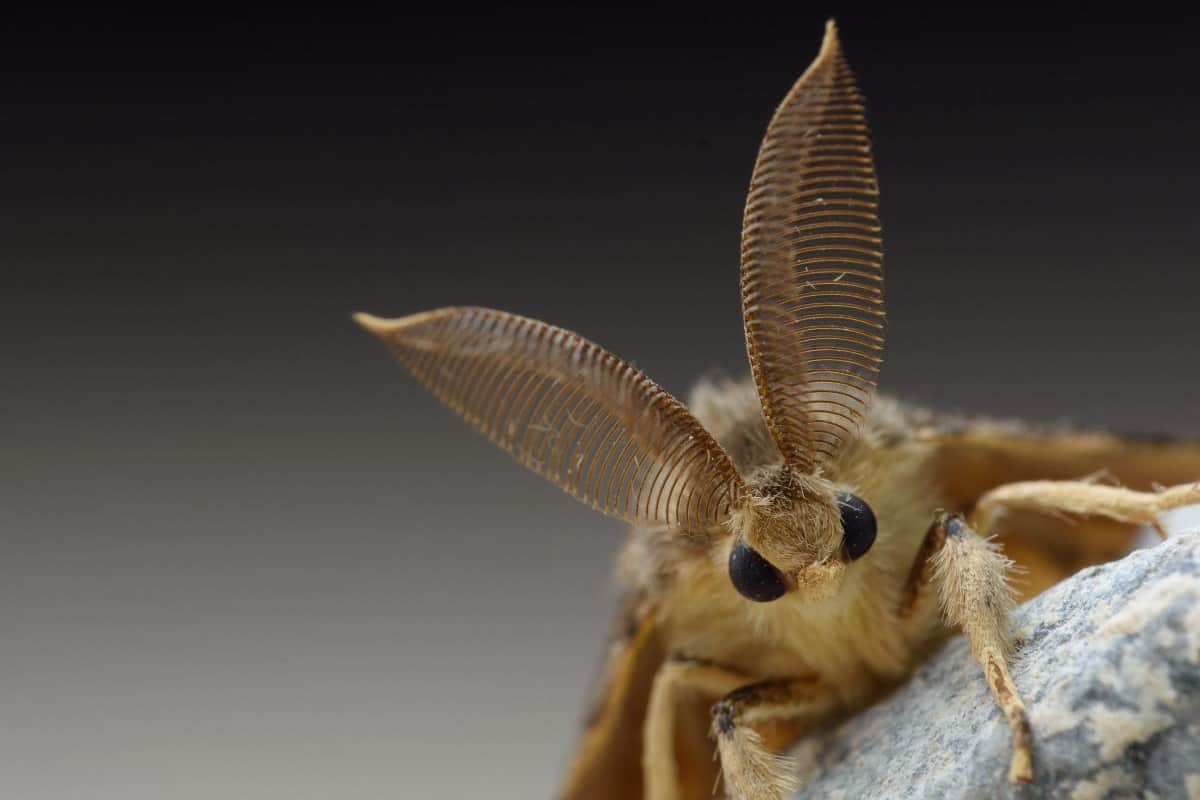Breathing is a necessity for all insects and moths are no different. After all, they constantly fly around at night so they definitely need plenty of oxygen for energy. But have you ever wondered how they pack a respiratory system inside such a small body?
Similar to other insects, a moth breathes through spiracles (tiny holes) present on its chest and abdomen region. However, instead of a lung, they have many interconnecting tubes or tracheae that deliver oxygen to every tissue.
In this article, we are going to put a moth’s breathing under the microscope. We will discuss how they breathe, how they transport gasses inside their bodies and their relationship with oxygen. And at the end, we take a look at some moths that have taken their breathing to the next level to survive underwater.
Do Moths Breathe?
Moths, like most living creatures, breathe in oxygen and exhale carbon dioxide. Breathing is such a habitual process for us that we can easily overlook it. But the basic demand for such a process is the same in moths as it is in humans. Every cell has it’s own metabolism and needs oxygen to survive and fulfill its purpose.
The cells that make up an animal’s body need energy, which they derive from food. Moth caterpillars require a lot of energy for completing their maturation process. As such, they tend to eat pretty much 24/7. The more they eat, the more energy they can store for use during the later stages of life. Hence, why some adult moths do not need to eat at all.
But for cells to use this food as energy, oxygen is mandatory. This is why animals have respiratory systems for maintaining a steady supply of oxygen. And while a moth’s respiratory system is simpler than some other species, theirs are particularly efficient at providing enough energy for flying.
So, moths need oxygen to utilize the energy inside the food they eat. And as such, they breathe oxygen just like any other insect.
Do Moths Have Lungs?
Since moths show typical respiratory activities, they also possess a respiratory system to facilitate this process. But unlike the traditional respiratory system we are used to, they have quite a few distinctions.
The chief of which is the fact that moths do not have any lungs.
Lungs in mammals and birds serve the purpose of gas exchange. It sort of works as a mediator by integrating oxygen from the environment in exchange for CO2 from inside the body.
But moths and butterflies do not have such a central organ for controlling respiration. They also do not have any large air sacs or reservoirs that you see with birds and fish.
So, now you are probably wondering how a moth breathes at all if they have no lungs. Without lungs or a similar organ, how can they transfer oxygen and CO2 inside their body?
Moths Have Multiple Tracheae Instead of Lungs
Well, they do this with the help of numerous small tubes called “tracheae”. Humans also have a trachea but ours is a solitary, pipe-like organ. Moths, on the other hand, have basically miniature versions of this all through their body.
These pipes transfer the air into the body and in tiny branches to every tissue. This is done without any active contraction or mechanism. The air floats on its own into the deeper parts. It is supported by the tissue surrounding the tracheae by moving the pipes into all directions.
Moths Do Not Breathe Through a Nose or Mouth
Another distinction between human breathing and a moth’s breathing is the absence of a nose in moths. They also do not have a suitable opening that can take in oxygen.
Rather, they have several small holes around their body that essentially acts as breathing holes. These tiny holes are known as “spiracles”.
If you ever examine a moth’s caterpillar up close, you will be able to tell these parts more clearly. They are the noticeable dots or spots on the middle portion of their bodies.
The caterpillars have 8 pairs of spiracles on either side of their abdomen, which is their belly region. And they have an additional pair of spiracles on their thorax or the chest region. So, they have a total of 9 pairs of spiracles on their whole exterior.
Adults have an identical number of spiracles. But some of these openings may be inactive or rudimentary during their pupa stage, which is the development stage preceding adult life.
Basic Mechanism of a Moth’s Breathing
Moths take in oxygen from their surrounding environment through the spiracles, exactly how we breathe through our noses. They are so adept at regulating these holes that they can open and close them independently.
The air then travels through the tracheae that are all interconnected with each other. These tube-like structures carry the oxygen to the deepest region of their body and to all of the tissues and other organs.
Additionally, moths also do not have oxygen-carrying pigments in their blood. So, the new air has to be delivered directly to the tissues. And this is also achieved by the tracheal system.
When they breathe through a couple of spiracles, they have other holes reserved for releasing CO2. Excess CO2 can be just as harmful to them as it is for us. Because it can severely disrupt their bodily functions and quickly snuff out their life.
As such, a moth will use some spiracles only for eliminating the built-up CO2. They can do this simultaneously by taking in oxygen. Or they can shut down the inhaling process and only focus on excreting the CO2 out of their body.
This is the basic mechanism that is responsible for maintaining respiration in moths.
-
Can Moths Set Off Sensor Lights: Unveiling the Truth

Many homeowners install motion sensor lights as a security measure, but what they might not have considered is the possibility of moths and other insects affecting their functionality. As sensor lights detect movement and heat, the question arises: can moths actually set off these sensor lights? Moths, being small flying insects, are capable of triggering…
-
Can Moths Make Sounds? Debunking Common Myths

Moths are fascinating creatures, known for their nocturnal habits and attraction to light. Yet, one lesser-known aspect of their behavior is their ability to produce sounds. Though it may seem surprising, certain species of moths have evolved to create ultrasonic noises as a defense mechanism against predators, particularly bats. Bats use echolocation to detect and…
How Does the Respiratory System Develop?
A moth has 3 distinct stages during its life cycle – caterpillar, pupa, and adult. And there are some notable differences in the respiratory system as each stage develops.
The spiracles remain relatively unchanged after each stage. All of them have 8 abdominal spiracle pairs with another one present in their thorax. However, the spiracles on the adults are more specialized, which allows them to open and close individual openings with greater freedom.
Caterpillars have very spacious tracheae that can sufficiently supply oxygen to the growing moth. Caterpillars are known for their voracious appetite. Meaning they need plenty of fresh oxygen to oxidize the food.
When they become pupae, their biological demands are reduced significantly. As such, the respiratory system as a whole becomes less voluminous.
Adults have the most spacious respiratory system. All that flying around and looking for potential suitors needs plenty of energy. So, the respiratory system develops according to the growing demand.
In fact, studies have found that the molting phases of a moth are closely linked with the size of its respiratory system. In each stage, the respiratory system remains the same in terms of volume. But the oxygen demand of the species increases with their physical growth.
This greater demand for oxygen signals the need to go into molting.
Because during a molting session the respiratory system undergoes significant change. So, if a moth is suffering from a lack of oxygen, their bodies will start preparing for the next part of its lifecycle.
(If the respiratory system seems interesting, wait for the 4-eye-vision: Moths Vision – A Complete Guide to Night Vision, UV, Colors, etc.)
How Long Can a Moth Survive Without Air?
This depends largely on the species of moth and their size. But a moth can survive for minutes to hours without breathing in any new air. This is possible by closing the spiracles and trapping the air inside small sacs.
The moth can freely control the opening and closing of the spiracles.
As is the case with many insects, this state of low breathing can be found when the species is at rest. They can remain stagnant for hours without releasing the air inside them, or only expiring CO2. Because they do not require as much oxygen when resting, they can afford to spend an extended period without breathing.
Some studies indicate that the moth does this as a way of reducing oxygen intake. Because too much oxygen can cause damage to the tissues. So, moths may go through such a state to not get overwhelmed by increasing oxygen levels.
Can Moths Breath Underwater?
The large majority of moth species cannot breathe underwater. They prefer dry land where they can keep their wings from getting wet. Because getting wet can drastically hamper their flight pattern and make them vulnerable to predators.
(You can find more here: Moths And Water And Rain with Captivating Vids and Facts)
However, there are a few species of moths that have adapted through evolution to survive even underwater. These species are aptly titled the “aquatic moths”.
Some of these species only spend parts of their life underwater, typically their caterpillar or larval stage. They are semi-aquatic moths. The only true aquatic moth is the Acentria ephemerella, which spends their entire life submerged in water.
The adult moths use their rear legs to swim in the water. They will go underwater and lay eggs near vegetation or rocks. The caterpillars feed on underwater plants or plants above the waterline.
Conclusion
A moth’s respiratory system can be an excellent microcosm of the insect respiratory system as a whole. So, by studying how a moth breathes and lives, we can get a clearer understanding of the diverse world of insects.


